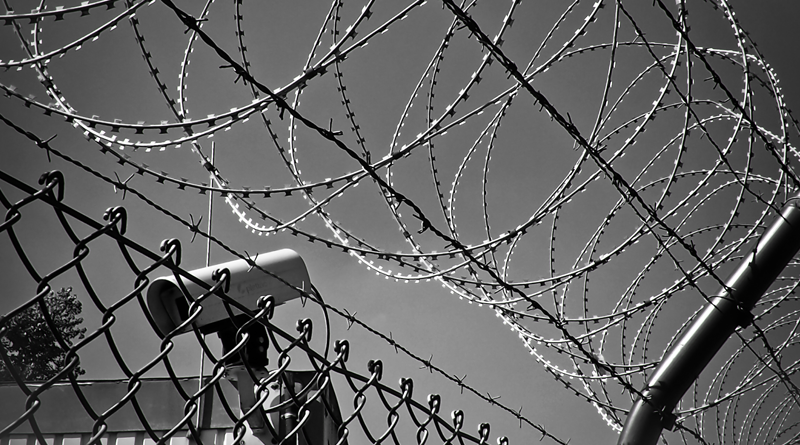Why Improving Access Control Is Critical in Correctional Facilities
By Dusty Hackleman
For correctional facility operators, the safety of all individuals on the premises is of the utmost priority. The effectiveness of your access control plays a key role in a facility’s security infrastructure—but could it be more effective?
By itself, an access control system plays a vital role in facility protection. But operators’ minds can be put at ease when access control is integrated with other systems to enhance security even further. For example, integrations with video surveillance and visitor management systems let operators use new security technology to fortify a facility better. While access control in its most basic form allows facility operators to manage the environment effectively, enhanced access control features take safety and management to the next level.
Secure a Space with Video Integration
Over the last decade, we’ve seen a significant increase in the type and number of security cameras available for correctional institutions. Consequently, security in access control systems and correctional facilities has strengthened. Revamped access control systems often integrate video monitoring systems to oversee a space and offer features such as video verification. This integration is an essential element of access control–one often overlooked.
While there are many options for the types of cameras in correctional facilities, they all benefit different aspects of space management. For example, video integration can prevent tailgating, the act of an unauthorized user following an authorized user into a secured space. Video integration seamlessly communicates with access control to lock doors when needed. Additionally, video surveillance can help deter unwanted activity and can now be linked with access controls to entry or exit points to help alert staff members when an event occurs. Video management systems can also keep track of who is in a space and when.
Strengthen Health Measures
Access control is about safeguarding your people and assets, and the future of access control is implementing features that also help keep your facility healthy, safe, and secure. The COVID-19 pandemic fueled the push for better integration within access control. What was once before on the backburner for many organizations, access control has turned into a necessity.
As mentioned, security for others’ health is gaining emphasis in the wake of the pandemic. Despite social distancing and new practices, health safety is critical in facilities due to indoor restrictions. To mitigate the spread of viruses like COVID-19, we can look at how indoor facilities in different industries use technology to curb transmission rates. For example, thermal cameras within entry points can identify visitors who may be unwell to reduce the rate of infection.
Access control integrated with systems like visitor management can also reduce face-to-face visitor contact with staff or offenders. Automating staff access has become increasingly important. If specific staff members only need to be in the facility at certain times, they can receive an automated health screening questionnaire each day to document possible symptoms. Doing this allows employees to report symptoms and exposure efficiently and notifies staff of potential risks. Per procedure, the staff member is then sent follow-up instructions on pursuing quarantine or further screening. Once scheduled visitors and staff members enter the facility, a customized system synced with access control can check for body temperature regulation, flagging any person who may have an irregular temperature that day.
Mitigating offender exposure to the virus is essential to strengthening facility health. In areas with authenticated access card readers, staff using electronically synced cards or fobs can leave an electronic footprint tracing back their movement throughout the facility. If an offender or officer begins showing symptoms, staff can trace this data footprint to potential contacts.
Account for Visitors and Employees
Accounting for the number of visitors and staff who come into correctional facilities is critical. Not only is it essential to have an overall headcount and system that tracks who’s coming and going, but it’s also necessary to have specific up-to-date access control credentials.
Newer electronic access control system integrations allow guests to be sent an invitation with mobile credentials when they arrive at the facility. These integrations enable an efficient scanning process and notify facility operators upon arrival into the lobby.
Aside from visitors, staff must be accounted for as well. There are several types of authentication pieces within access control to guarantee secured access within facilities. Choosing the best credential process and combination for your facility can reinforce staff and offender safety. Proximity-based access control systems, or prox cards, are effective when the level of encryption exceeds your security demands.
While prox cards were once a highly secure access control method, it’s mandatory to supplement them with another piece of access control for more robust security if encryption is low. Biometric readers, such as fingerprint readers, have become more common as they are difficult to replicate. The most significant advantage to this implementation is that the user has their unique key, themselves. Biometric authorization tools remain accurate and accessible.
An additional option to secure credentials is dual authentication. This method incorporates a physical key (a card or fob) and a PIN or passcode. If an unauthorized person obtains the physical key, that person does not have the designated passcode. Finally, there are NFC credentials that security staff can access through smartphones. This technology uses Bluetooth or your phone’s NFC chip and provides a physical yet encrypted connection for the user.
Choosing security methods to align with your facility operations is a process needing great care and patience to address. Enhancing your access control credentials can substantially impact secure day-to-day operations and pay off in dividends.
Dusty Hackleman is a senior sales engineer at STANLEY Security in its Corrections Security Electronics Division.
Editor’s Note: This expert piece originally appeared in the March/April 2022 issue of Correctional News.

